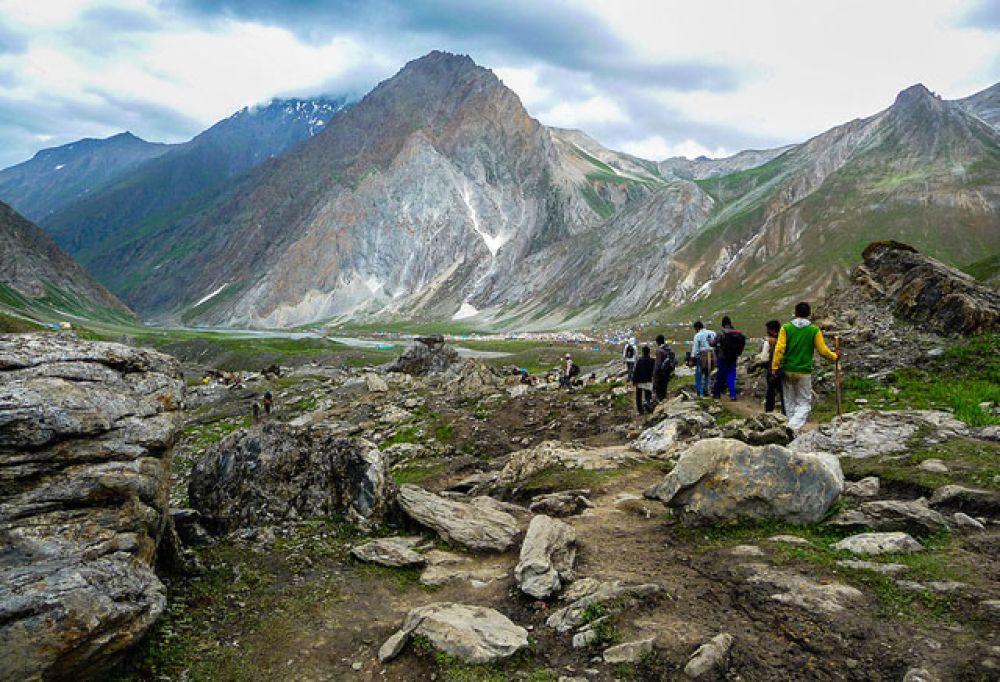

Tourism in the beautiful and transcendent region of Kashmir has a history that dates back centuries. The region, known as "Paradise on Earth," has attracted travelers from around the world due to its captivating natural beauty, rich culture, and spiritual significance. Among Kashmir's numerous attractions, the Amarnath Temple, perched in the lofty heights of the Himalayas, stands out as a prime destination for pilgrims and adventurers alike.
The Sangam, where the Amravati and Panchtarni rivers merge, is more than just a scenic spot. It's a symbol of serenity and a pivotal part of the Amarnath Yatra, a religious pilgrimage to the sacred Amarnath Temple. Devotees believe that a dip at the confluence purifies the soul, and it marks a significant ritual before proceeding to the shrine.
The Amarnath Temple is one of the most revered shrines in Hinduism, dedicated to Lord Shiva. According to beliefs, the cave is the very site where Lord Shiva revealed the secrets of immortality to his consort, Parvati. The presence of the naturally formed ice lingam (a representation of Shiva), which waxes and wanes with the moon, further enhances the temple's mystical allure. The shrine is accessible to pilgrims only during a brief period in the summer when the Amarnath Yatra takes place, drawing hundreds of thousands of devotees braving the difficult terrain and harsh weather to seek blessings.
Tourism in Kashmir has evolved over the years, with changing trends and the introduction of modern amenities. Historically, the region witnessed a boom in tourism during the British Raj when officials and adventurers sought the cool climes of the valley to escape the heat of the Indian plains. Post-independence, Kashmir continued to flourish as an idyllic tourist spot until regional conflicts in the late 20th century caused a significant downturn. In recent years, there has been a concerted effort to revive the tourism industry, emphasizing sustainable travel and infrastructural improvements. Despite challenges, the natural beauty and cultural richness of Kashmir continue to draw tourists, with destinations like Gulmarg, Pahalgam, and Srinagar topping travel itineraries. However, the Amarnath Yatra remains one of the cornerstones of Kashmir's tourism calendar.
The latest trends in Kashmiri tourism showcase a shift towards more ecologically responsible travel, boutique experiences, and adventure tourism. Visitors are increasingly looking for unique stays like houseboats on Dal Lake, heritage homestays, and luxury tents. Activities like trekking, skiing in Gulmarg, and white-water rafting are gaining popularity, broadening the scope of Kashmir's appeal beyond its traditional pilgrim and sightseeing audience. Additionally, the state has been investing in digital promotion and cultural festivals to showcase its multifaceted attractions to a global audience.
In conclusion, despite its complexities, the allure of Kashmir, with treasures like the Sangam and Amarnath Temple, continues to position the region as both a spiritual journey and an adventurer's retreat. With its unique blend of nature, culture, and spirituality, Kashmir remains a timeless destination within India's tourism landscape.